Post content:
The Development of Chess Pieces
A term that many chess beginners are confused with is precisely this: piece development.
When we talk about "pieces" we are referring to all those that are not pawns., and it is a term that you end up getting used to although initially it does not make much sense, since pawns would also be pieces, in the strict sense of the word.
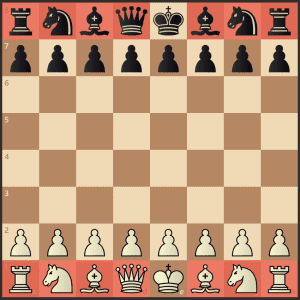
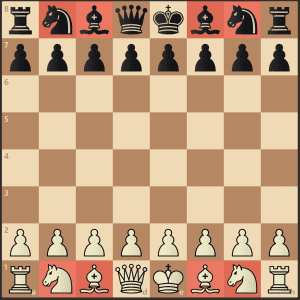
What is "developing parts"?
This well-known term is used to refer to those pieces that have some influence on the game.
It is not the same to have your knights on their initial squares as to have them attacking the rival king. In the second case, your horses would have good development.
Because it is important?
As you can imagine, the so-called "pieces" are the best weapons to harass your rival, since pawns, although they are also useful, can be stopped more easily, and they will rarely be able to take care of a good attack or a Good defense.
How to develop pieces?
Achieving this does not seem very complicated, but nevertheless, has its trick, so I want to provide you with a couple of tips to optimize this process.
1.- Minor pieces: Bishops and Knights.
Forget about the rooks and queen at the beginning of the game, as it is the bishops and knights that can naturally have the most influence in the center of the board.
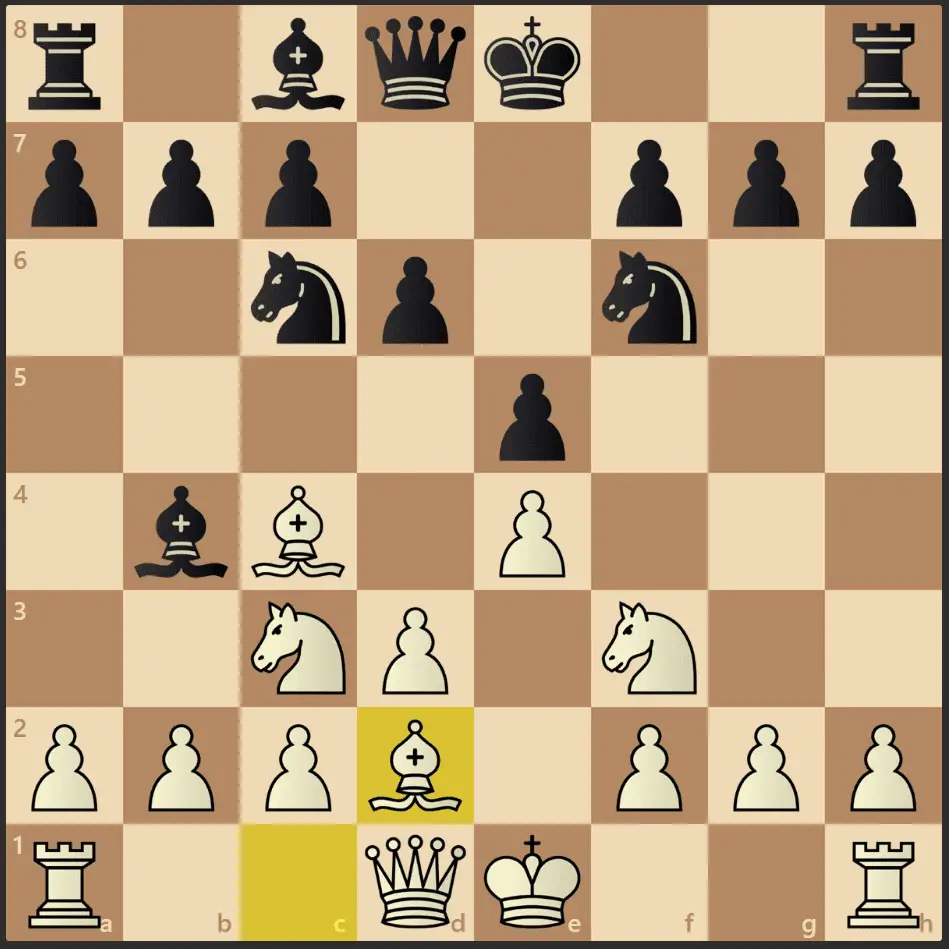
The black player does not have to be in any hurry to capture his opponent's knight, in the same way that the white player should not have any concern about exchanging his knight: the most important thing in the first moves is to put your pieces into play.
2.- Do not interfere in the development of other pieces.
In this position, white had developed his knight, and with this move he attacked an opponent's pawn, so black defended it and at the same time developed his bishop.

The black player decides to defend his pawn with the bishop, but he has not realized that now one of his pawns will not be able to move, and in this way he is blocking the most natural way out for his other bishop, in addition to the fact that this pawn would have been important to exert some influence in the center of the board.
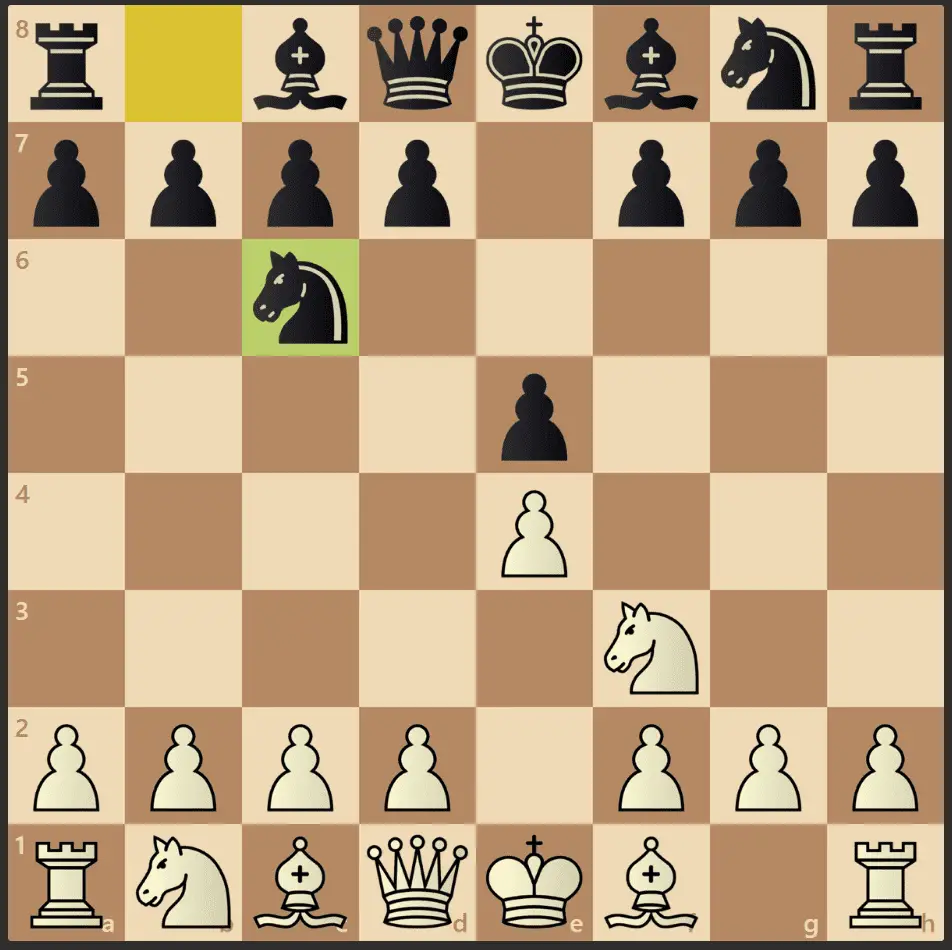
Defending the pawn with the knight is usually the best alternative in that position, since the pawn that we are now blocking does not harm the subsequent movement of any other piece.
3.- The pieces have to go towards the center.
This advice is aimed especially at horses, since they are the offensive pieces that have the shortest range.
In the image below you can see that the knights that have been brought towards the center have much more influence than those that have been developed towards the side of the board.
In addition to the white player's knights being able to jump to more squares, They control the four central squares.
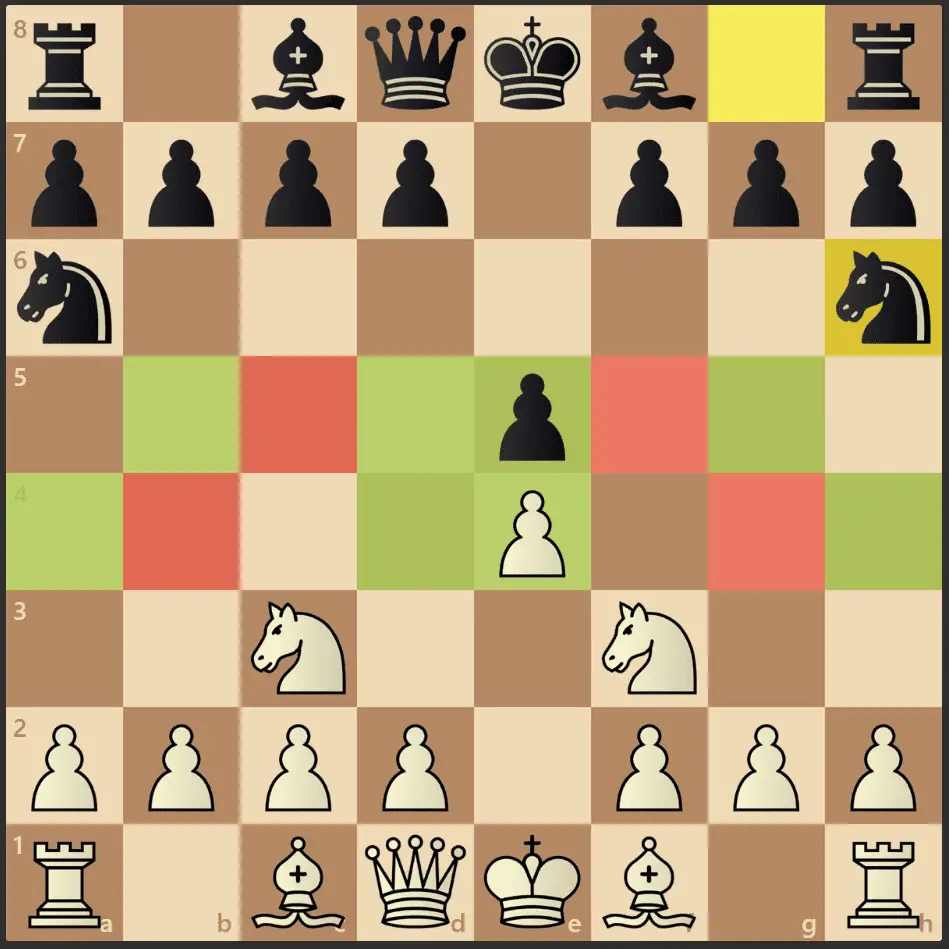
4.- It is slightly better to develop knights before bishops.
As we just mentioned: Knights are short-range pieces, and the best square for each is usually the one shown in the image below, since that is where they have the most control and mobility.
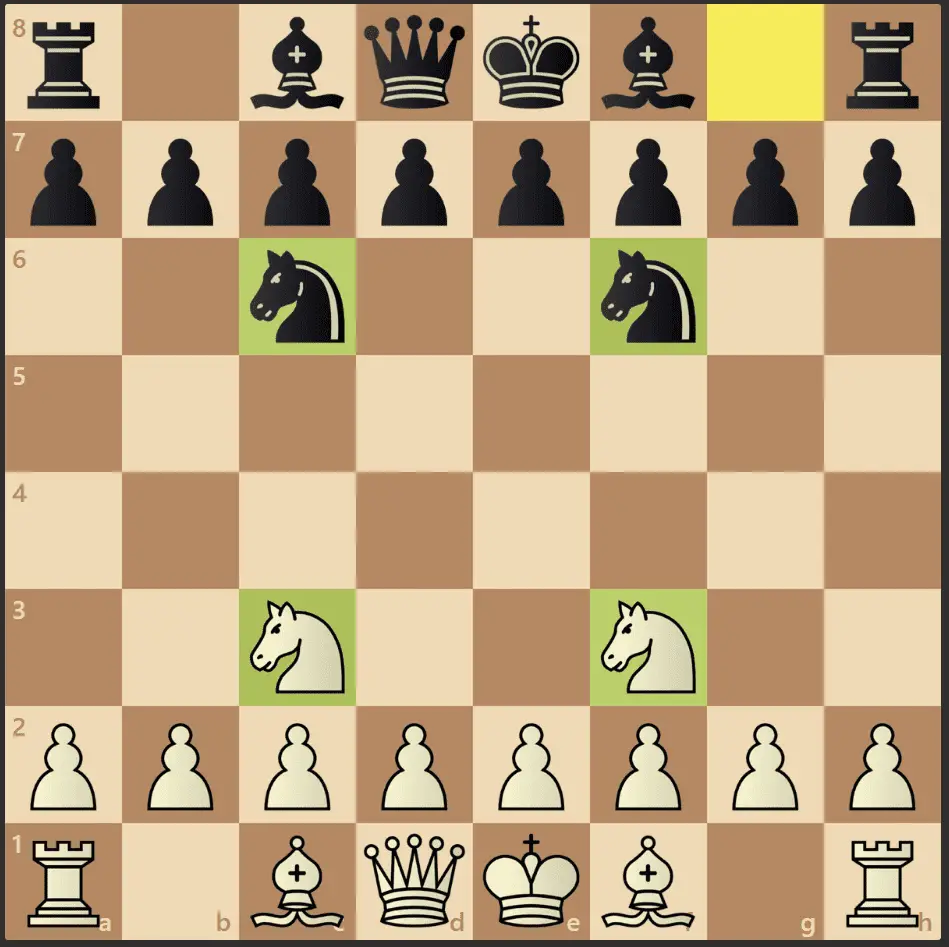
On the other hand, bishops in the opening can have up to 4 squares where they would be useful, so you can leave that decision for later, and deal with one or both knights first.
In the image below you can see in green the four squares in which the bishop marked in blue could be well positioned.
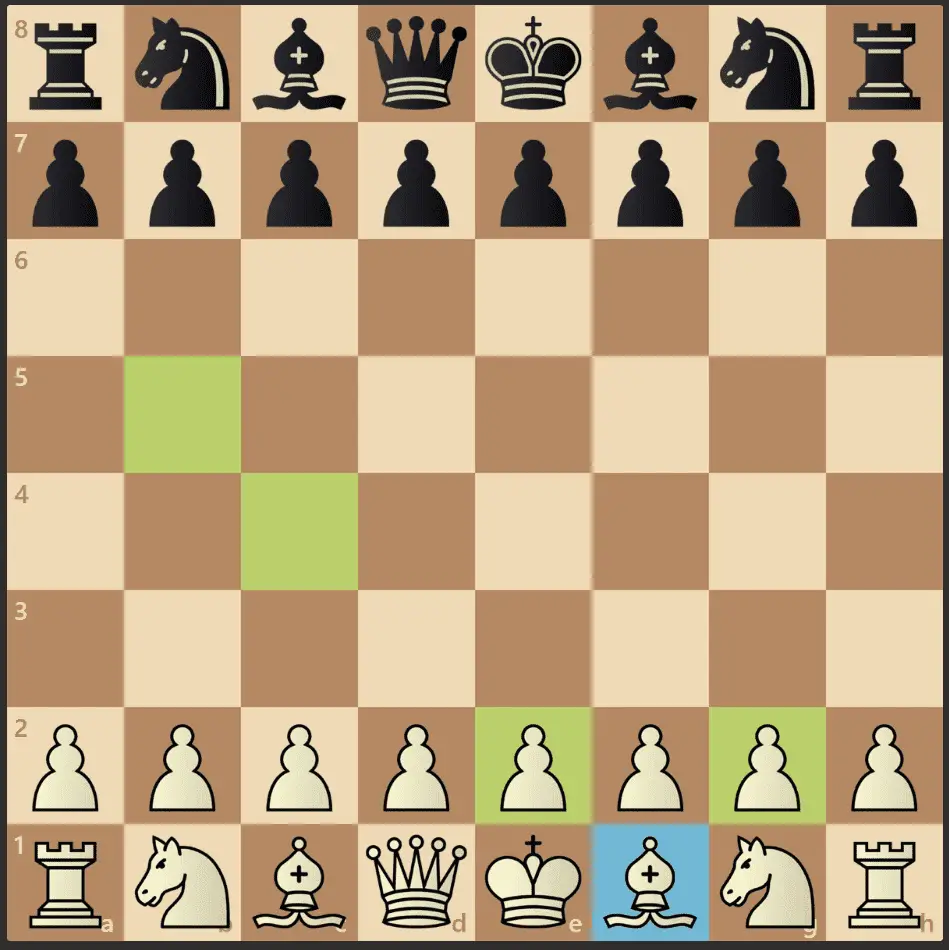
5.- It is dangerous to move the queen early.
If the queen is the piece with the most influence on the board and the one with the best offensive capacity, why aren't we going to use it from the beginning?
Well, it happens that the queen is a double-edged sword, since being so powerful, it is also the most important piece (not counting the king), and the opponent can take advantage of that.
Observe in the following example how in a sequence of 10 moves the black player obtains an advantageous position, taking advantage of the white player's careless attack.
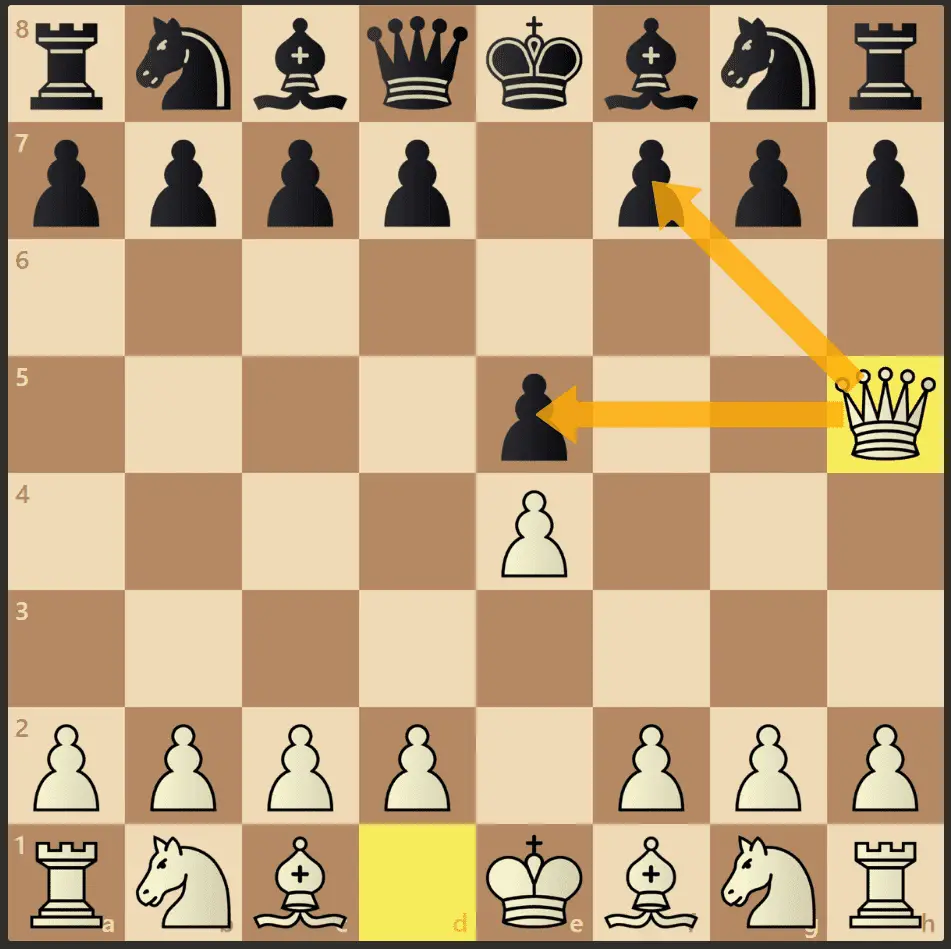
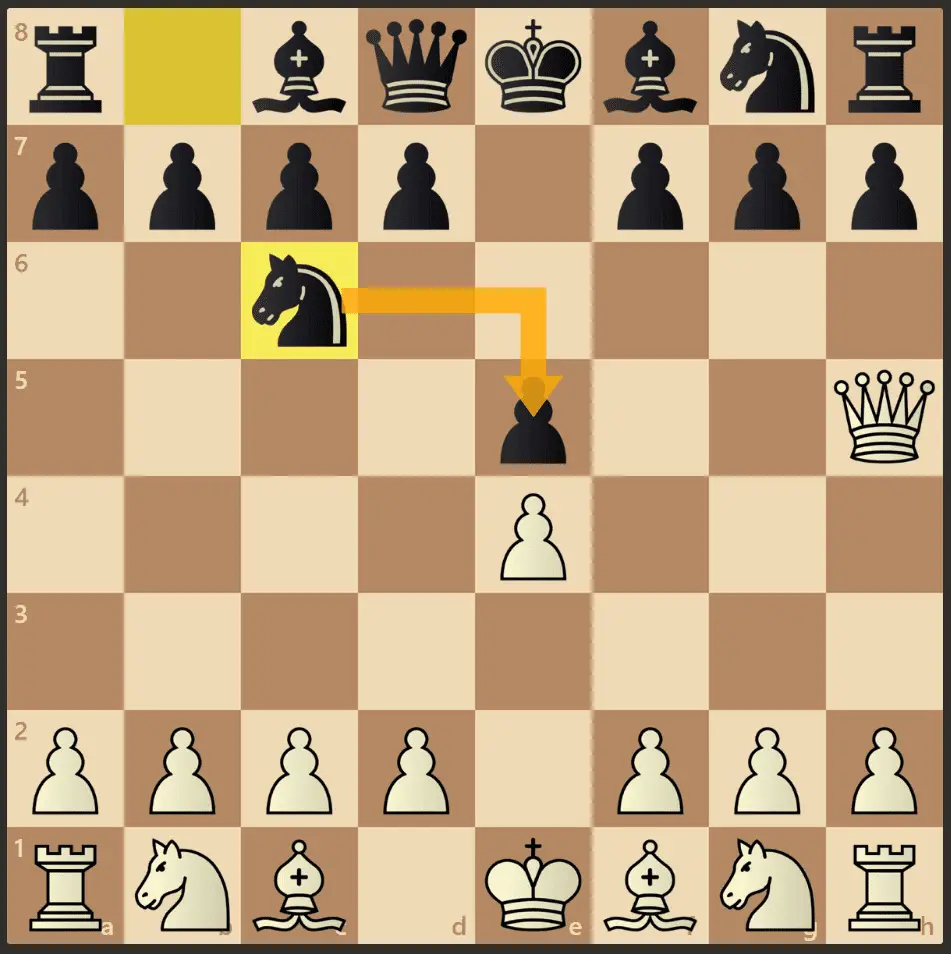
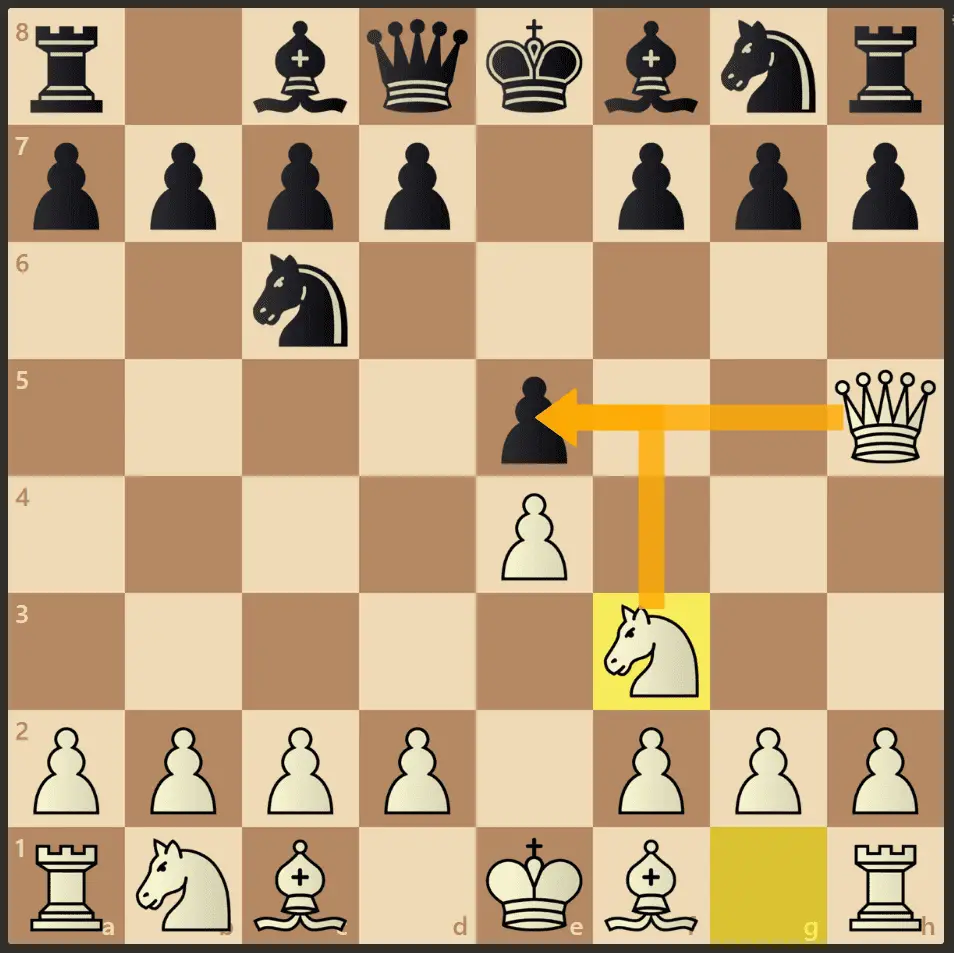
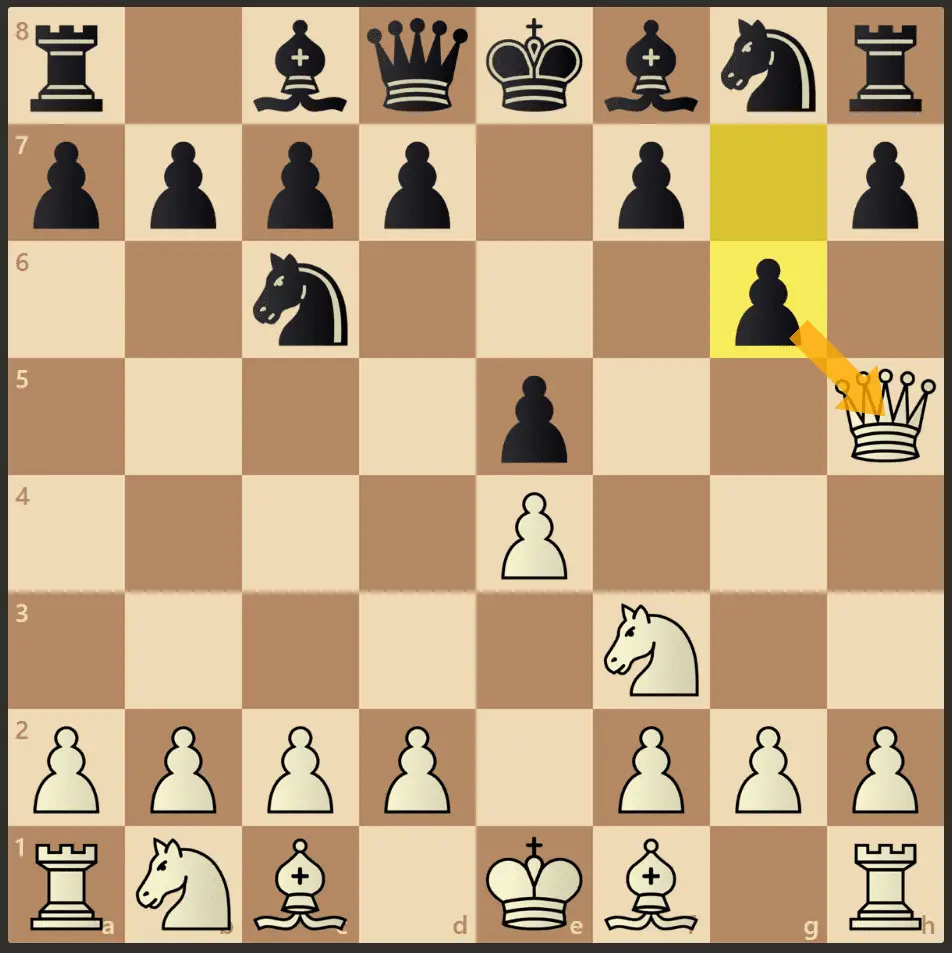

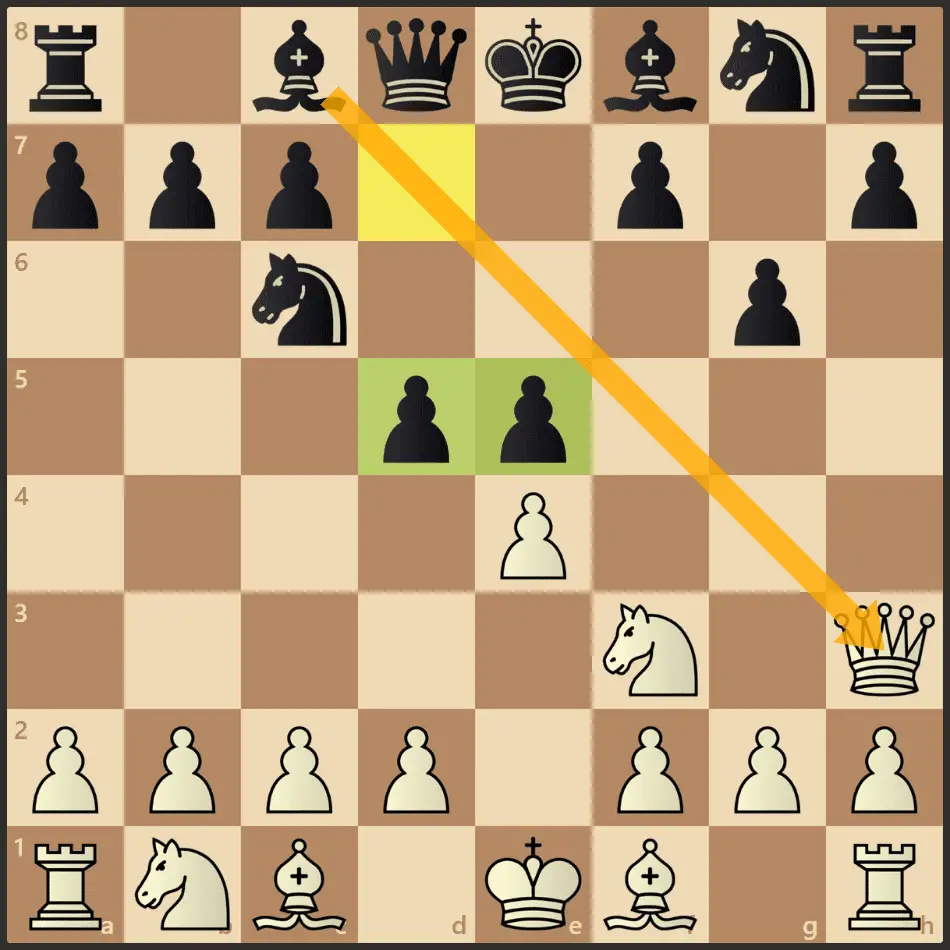
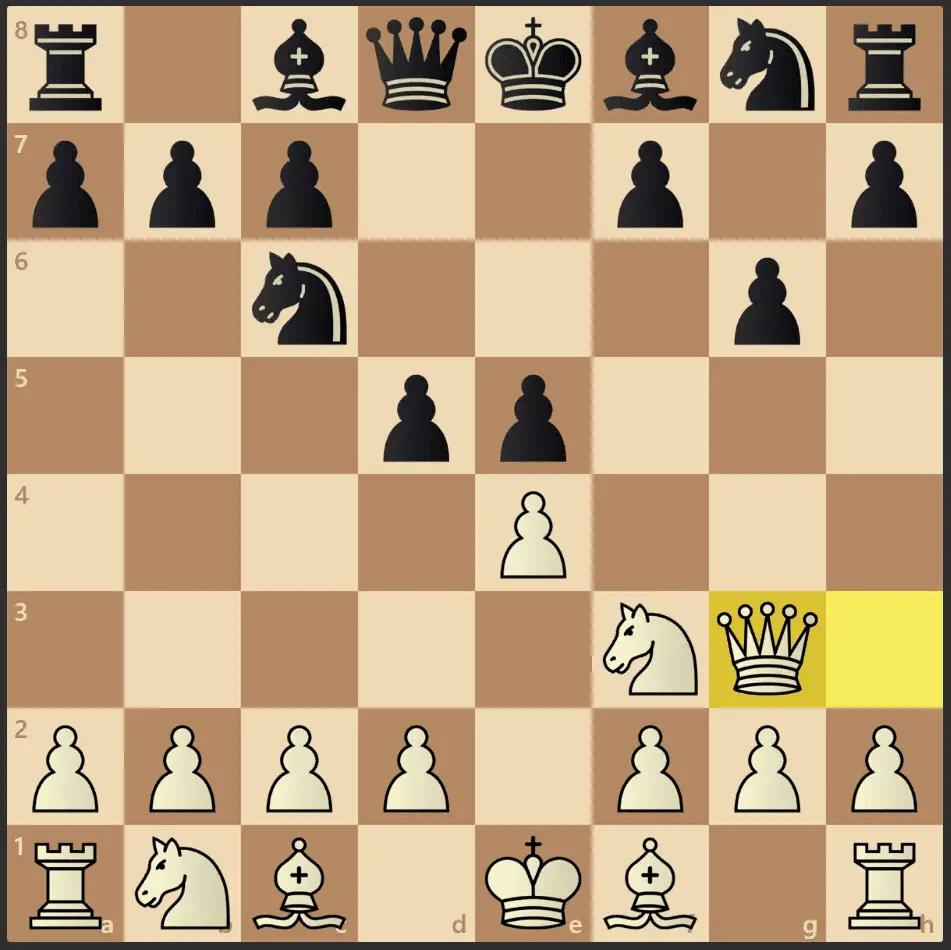
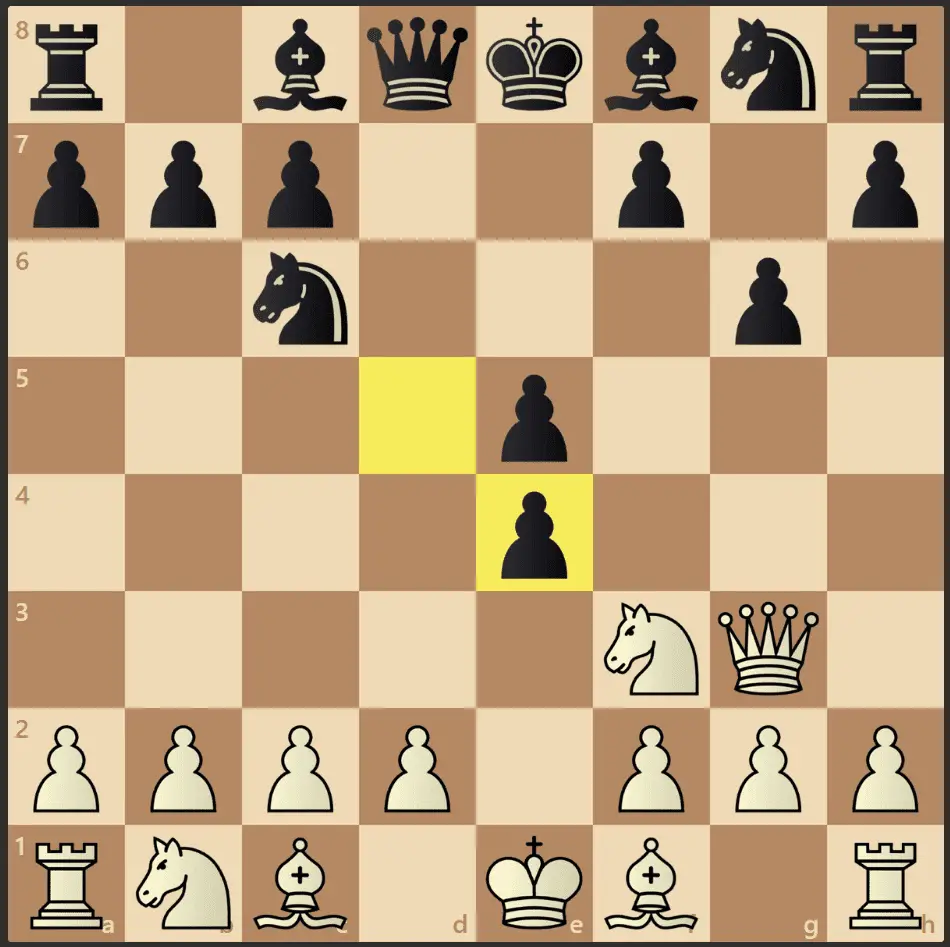

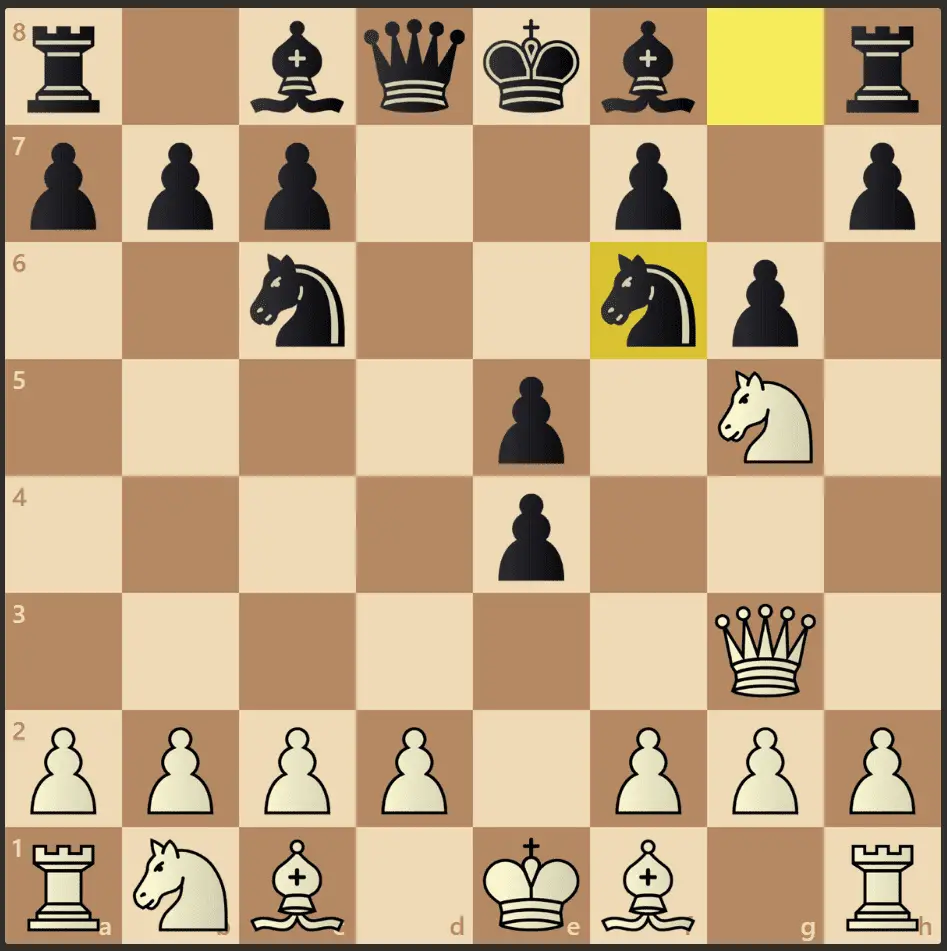
In these two final images we can see that the black player has achieved complete control of the center, he has his two knights in the optimal positions to start the game, and his bishops have an immense number of squares to move to.
This has happened because the black player has been developing pieces and fighting for the center while creating threats on the opponent's queen. The opponent was not interested in exchanging his queen for a bishop or a knight, and to avoid this he had to make many moves that do not fit with the concepts we had studied so far.
6.- About the towers
Since we have talked about the rest of the pieces, I did not want to leave the towers indifferent.
You have to know that their development, in many games, is even later than that of the queen herself, and they only move to castle and keep the king safe.
The rooks, unlike the other pieces, at the beginning of the game have many difficulties in maneuvering and exerting influence, because until some of your own pawns leave their column, the rook will not be able to attack the opponent's pieces.
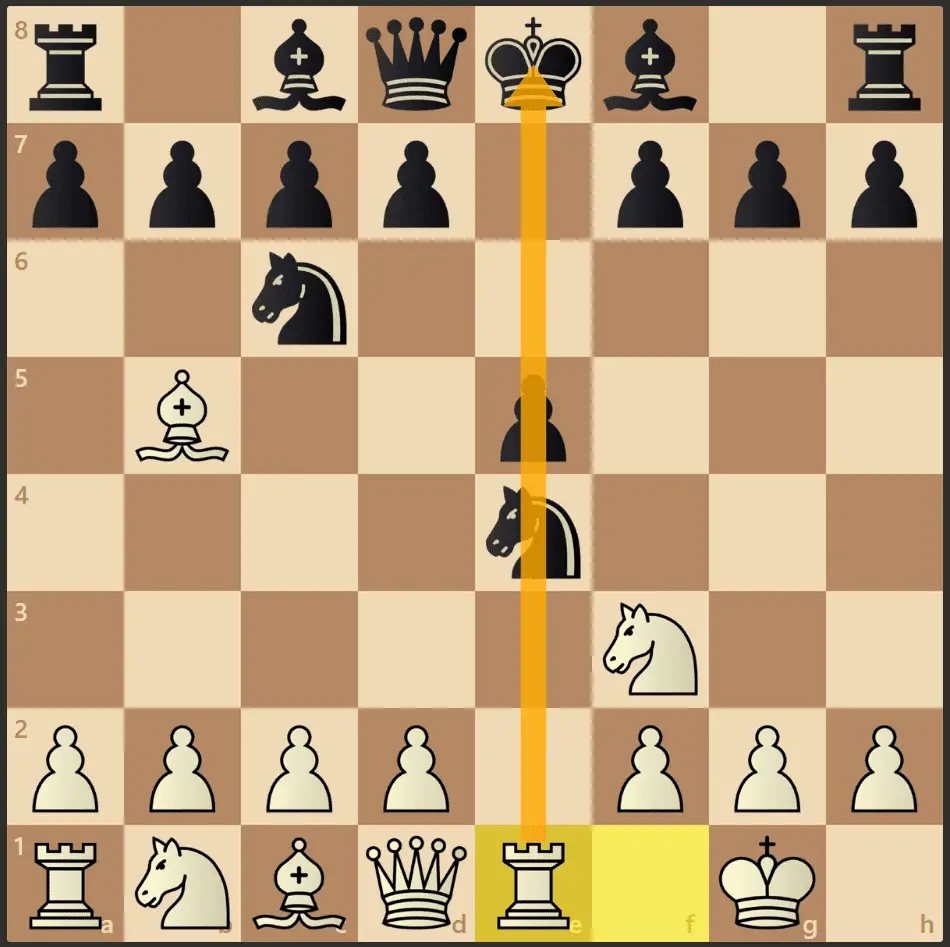
As you can see in the image above, we have obtained a position where we can develop the rook and have some influence on the game, but this does not happen as often in the first moves.
Summary
[…]
Here ends the explanation of «Development of pieces in chess«.
Can return to index of these chess tips and concepts by clicking here.
